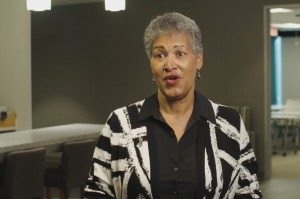5 Common Growth Barriers Churches Deal With
In the midst of a megachurch phenomenon, smaller churches are struggling to go above the 1,000 or even 65 mark of regular attendees.
Many churches deal with the same inevitable growth barriers that keep them from filling their pews and reaching more for Christ. They essentially find themselves stuck.
At those times, the wrong question to ask is "How do I get my church to grow?" says Nelson Searcy, lead pastor of The Journey Church in New York City, according to Outreach magazine.
"When you think growth is your responsibility, you will inevitably make bad decisions," he says. "It's about God's power."
Searcy advises church leaders to instead ask themselves "What is keeping my church from growing?"
The most fundamental barrier churches face is space, according to the New York pastor, and the easiest to overlook.
"As church leaders, we love full rooms, so we say, 'Pack 'em in, there's still a few seats!' But the truth is that when a room reaches 70 percent of its seating capacity, it's full. Period," he stresses.
When The Journey, a five-year-old multicultural and multi-site community of more than 1,200, averaged close to 80 people each week in a theater that could pack 110, they stopped growing. Attendees stopped inviting friends perceiving there was no more room and some attendees stopped because it was hard to find a seat, Searcy explains. After The Journey moved to a space that was three times bigger, the church began growing again.
Most churches face growth barriers when attendance reaches 65, 125, 250, 500 and 1,000, he notes. For the country's largest churches, the attendance ceiling hovers around 20,000, with only five churches in Outreach's recent Largest 100 list reporting attendance at or above that mark.
On another note, Searcy cautions against starting a second service too early. He says it's better to grow to 300 or 400 before starting one.
The second common barrier is self-development. If the church leaders have stopped maturing spiritually and progressing personally, the congregation is not far behind, Searcy highlights. Signs that a pastor isn't growing include stale sermons, the congregation's passion waning and the halt of staff and church growth.
To turn that around, Searcy suggests setting up a reading goal with books focused on theology, history as well as the Bible. Also, attend key conferences and seek out mentors.
Growth barrier number three is sharing.
"Churches stop growing when they become inwardly (instead of outwardly) focused," Searcy says. "If you notice a decline in your number of first-time guests and an increase in discussion of inwardly focused programs, beware! You are about to fall victim to the sharing barrier."
Healthy churches should have a 5:100 ratio of first-time guests, according to Searcy. If not, focus more on evangelism outreach and encourage people to invite friends to church.
Weekly worship service can also be a growth barrier. Searcy calls it "the front door" through which people get their first impression of the church.
"To keep your service strong, always try to look like a church twice your size," he advises.
Some tips Searcy gives to church leaders include taking their preaching up a notch, tweaking their transitions, visiting larger and growing churches, and attending cutting-edge seminars.
Staff proves to be another major barrier to growth.
"Hiring staff is truly a faith issue," says Searcy. "Many pastors want to put off staff hires until they have the money in place to support the positions. Sounds like a practical plan, but unfortunately, it doesn't work. You will never have enough money in advance to hire the staff you need."
He suggests looking at a year-long position that would require a $48,000 salary in three-month blocks or a $12,000 risk.
And when facing these growth barriers, Searcy encourages church leaders to affirm that God wants to grow their church and that they themselves want to see their churches grow.



























